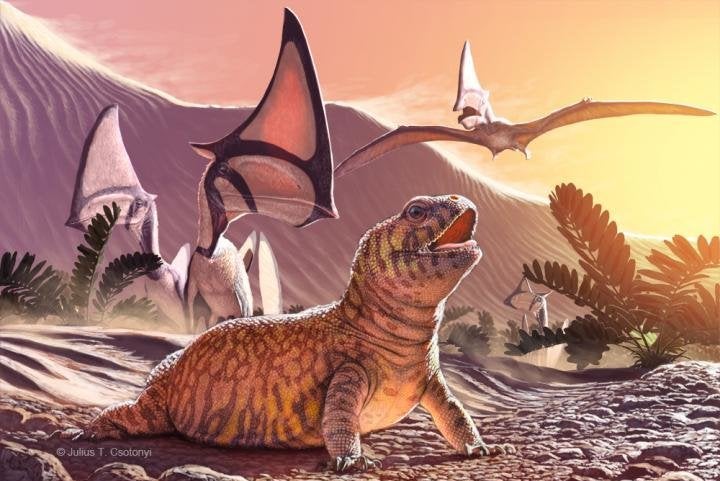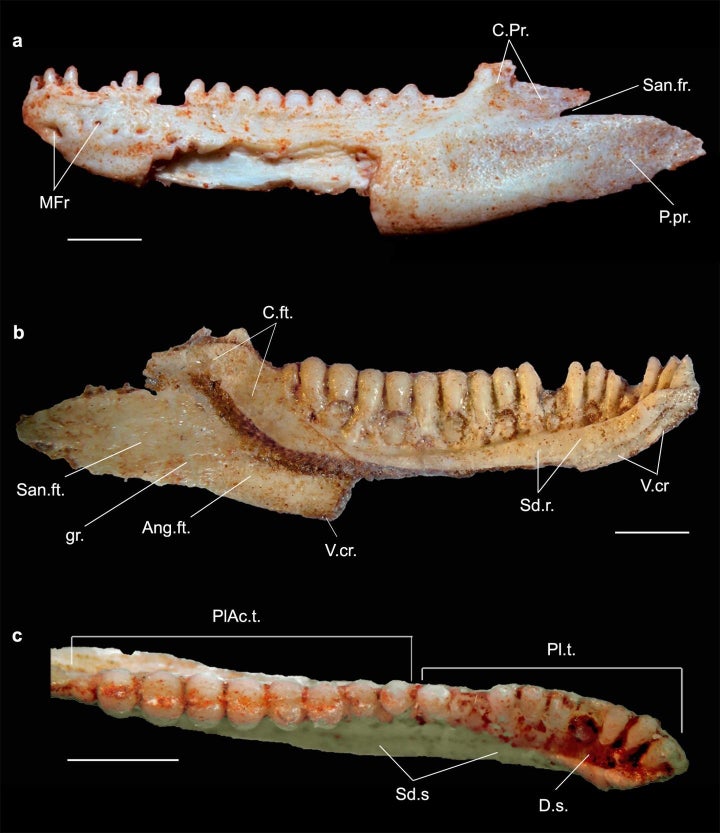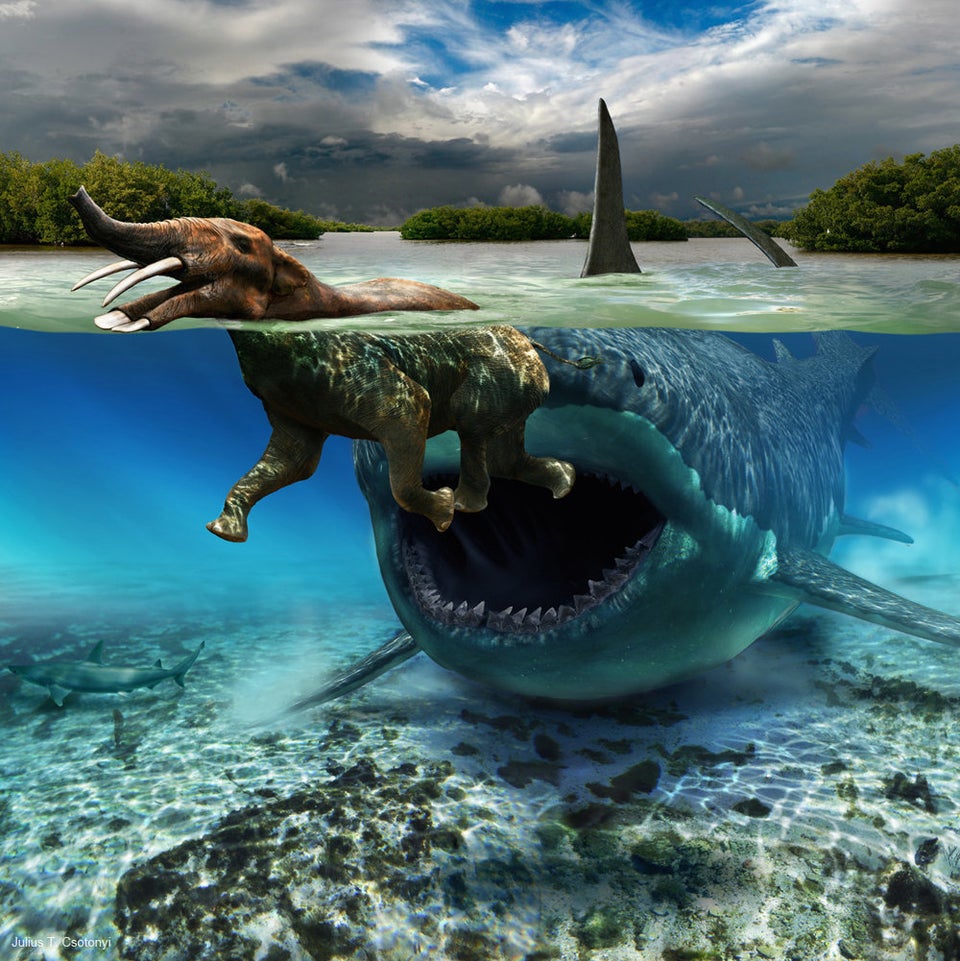
An illustration of Gueragama sulamerica.
Paleontologists have discovered the fossilized remains of an extinct lizard species in Brazil that date back about 80 million years -- and the newly identified creature, named Gueragama sulamericana, may hold clues to the ancient history of iguanas.
Modern-day iguanas are one of the most diverse groups of lizards alive today. They are categorized into two groups based on their teeth. Acrodontan iguanians, whose chompers are fused to the top of their jaws, are primarily found in the Eastern Hemisphere; non-acrodontans are primarily found in the Western Hemisphere.
It turns out that the Gueragama is the first acrodontan found in South America, which suggests that both acrodontans and non-acrodontans must have roamed the single landmass of Pangaea before it broke apart into the continents we are now familiar with.
The discovery also suggests that some of South America's first lizards may have been more closely related to their counterparts in Africa and Asia than to the iguanas that now roam the continent.
"It’s a missing link in the sense of the paleobiogeography and possibly the origins of the group," Dr. Michael Caldwell, biological sciences professor at the University of Alberta in Canada and a co-author of the paper describing the newly discovered lizard, said in a statement. "This Gueragama sulamericana fossil indicates that the group is old, that it’s probably Southern Pangaean in its origin."

The specimen upon which the description and name of Gueragama sulamericana is based.
The paper was published in the journal Nature Communications on Wednesday.
To identify the ancient lizard, the researchers examined a tooth and jaw fossil that was recently unearthed from a late Cretaceous desert in what is now the municipality of Cruzeiro do Oeste in southern Brazil. Next, they hope to dig up even more answers to questions about iguanid lizards and their origin.
"As with many other scientific findings, this one raises a number of questions we haven’t previously considered," Tiago Simoes, a Ph.D. student of Caldwell's and lead author of the paper, said in the statement. “This finding raises a number of biogeographic and faunal turnover questions of great interest to both paleontologists and herpetologists that we hope to answer in the future." In other words, unraveling the distribution of lizard species since Pangaea is an ongoing process.
Also on HuffPost Science:

